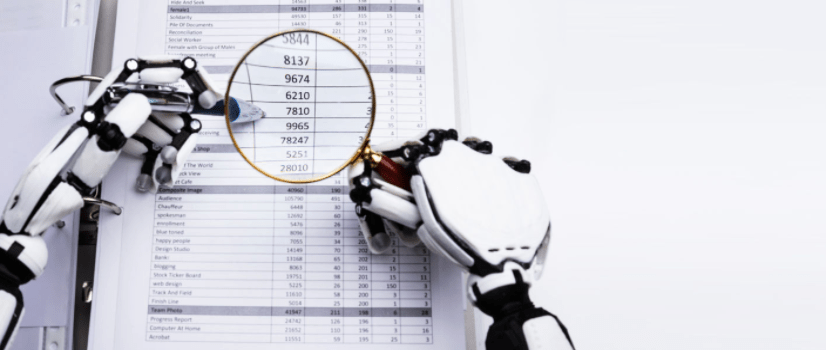Invoicing, a crucial aspect of business operations, often proves to be a time-consuming process involving manual data entry, record-keeping, and excel spreadsheets. Unfortunately, such methods are prone to human error, resulting in inefficiencies.
Did you know that manual data entry errors can cost businesses an estimated 5-7% of their annual revenue? The traditional approach to invoice processing is not only inefficient but also susceptible to human errors that can have a significant impact on a company’s bottom line.
Fortunately, there is a solution that can enhance profitability and optimize high-volume office operations: the integration of Robotic Process Automation (RPA) and Optical Character Recognition (OCR) into financial services transactions.
By leveraging RPA and OCR, organizations can automate repetitive tasks and extract crucial information from invoices with remarkable speed and accuracy. In fact, studies have shown that RPA can reduce invoice processing times by up to 80% and increase data accuracy by over 90%.
With RPA and OCR technologies, billing and invoicing functions can be automated with unrivaled accuracy, operating tirelessly 24/7. This automation not only streamlines office operations but also boosts profitability. Real-time generation of work orders as orders are completed reduces processing time, leading to improved customer satisfaction. Additionally, streamlining accounts payable and accounts receivable functions through automated invoicing and reconciliation tasks enhances accuracy, reduces human error, and overall improves the efficiency of finance and accounting departments.
Also Read: SAP S/4HANA with Intelligent RPA: Advantageous are Uncountable!
Challenges with traditional invoice processing
Invoice processing, the bane of many businesses, comes with its fair share of challenges when using traditional methods. The reliance on manual data entry introduces the risk of errors and is a time-consuming process. Paper-based processes further complicate the workflow, making it difficult to track invoice status and resulting in inefficiencies. The lack of real-time visibility hampers the timely resolution of discrepancies.
Retrieving and analyzing invoice data becomes a tedious task, impeding decision-making processes. Scalability becomes a concern when handling large volumes of invoices, leading to delays and increased staffing needs. Compliance and audit risks are heightened due to inconsistent processes and documentation.
Here is a list of challenges businesses face with traditional invoice processing methods:
- Manual data entry
- Paper-based processes
- Lack of visibility
- Inefficiency and delays
- Difficulty in data retrieval and analysis
- Limited scalability
- Compliance and audit risks
How RPA helps in invoice processing
Unlike physical robots, RPA utilizes digital software bots that operate existing systems through user interfaces, mimicking human workers. This unique approach makes RPA a faster and more cost-effective solution compared to traditional software integrations that require APIs and extensive programming.
When it comes to invoice processing, RPA bots follow a series of steps to efficiently handle the task.
Identify Invoices – Firstly, they are trained to locate invoices from various sources, such as vendor portals, email accounts, or Electronic Data Interchange (EDI) systems.
Extract data – Once an invoice is identified, the RPA bot scans it and extracts relevant data using advanced cognitive capabilities like computer vision and Natural Language Processing (NLP). This allows the bot to accurately copy the data into other applications and systems, such as ERP or accounting software.
Match invoices with other relevant documents – RPA bots are capable of matching invoices to related documentation like purchase orders or receipts of goods. They compare line items and validate the information, even sending notifications to vendors if any discrepancies are found.
Approval – The bots can route invoices for approval, ensuring that the appropriate manager reviews and approves the payment. In some cases, RPA bots can even handle routine payments without the need for human intervention.
Posting payment to the system – Finally, RPA bots seamlessly post the approved and paid invoices to the system, ensuring accurate data and creating a detailed audit log throughout the entire process. By automating these steps, RPA eliminates errors, improves efficiency, and enhances the overall invoice processing workflow
Also Read: 10+ RPA and Machine Learning Use Cases that might Interest your Enterprise
What are the benefits of invoice automation?
Invoice automation offers several benefits that can greatly improve business operations. Here are some key advantages of implementing invoice automation:
-
Streamline Team Communications
Invoice automation eliminates the need for manual communication and coordination among team members involved in the invoice processing workflow. Automated notifications and reminders can be sent to relevant stakeholders, keeping everyone informed about the status of invoices, approval requests, and payment deadlines. This streamlines communication, reduces delays, and ensures a smooth workflow.
-
Improve Cash Flow
With invoice automation, businesses can expedite the processing of invoices, leading to faster payment cycles. By reducing the time, it takes to generate and process invoices, organizations can accelerate their accounts receivable collections and improve cash flow. This provides greater financial stability and flexibility for the business.
-
Reduce Costs
Manual invoice processing can be time-consuming and labor-intensive, requiring significant human resources. Invoice automation reduces the need for manual data entry, paperwork, and repetitive tasks, resulting in cost savings. It frees up employees’ time to focus on more value-added activities and reduces the risk of errors, which can lead to additional costs.
-
Improve Accuracy
Human error is a common challenge in manual invoice processing. Invoice automation minimizes the risk of errors by automating data entry, validation, and reconciliation processes. Advanced technologies like optical character recognition (OCR) ensure accurate data extraction from invoices, reducing the likelihood of mistakes. This leads to more accurate financial records and reduces the need for costly corrections.
-
Accelerate Financial Close
Invoice automation can significantly speed up the financial close process. By automating tasks such as invoice reconciliation, data entry, and validation, businesses can reduce the time it takes to complete financial close activities. This allows for faster reporting, analysis, and decision-making, enabling organizations to gain insights into their financial health in a more timely manner.
-
Strengthen Governance and Controls
Invoice automation introduces robust governance and control mechanisms into the invoice processing workflow. Automated systems can enforce compliance with internal policies, regulatory requirements, and financial controls. By standardizing and automating processes, businesses can ensure consistency and accuracy in invoice handling, reducing the risk of fraud, errors, and non-compliance.
Also Read: RPA: A Blessing in Disguise for Accounting & Finance Industry
Final Thoughts
Robotic Process Automation (RPA) is a valuable tool for automating the invoice processing workflow. The automation of manual tasks in the invoice process frees up valuable time for employees to concentrate on higher-value activities. Additionally, RPA streamlines the workflow, resulting in faster processing times and increased customer satisfaction.
By integrating RPA into your invoice process automation strategy, you can optimize resource allocation, reduce errors, and minimize processing delays. This not only leads to cost savings but also improves overall operational efficiency.
If you are considering implementing RPA for invoice processing automation, our experts are available to discuss your specific requirements and provide guidance tailored to your organization’s needs. Take the first step towards a more streamlined and efficient invoice processing system by reaching out to our team today.


